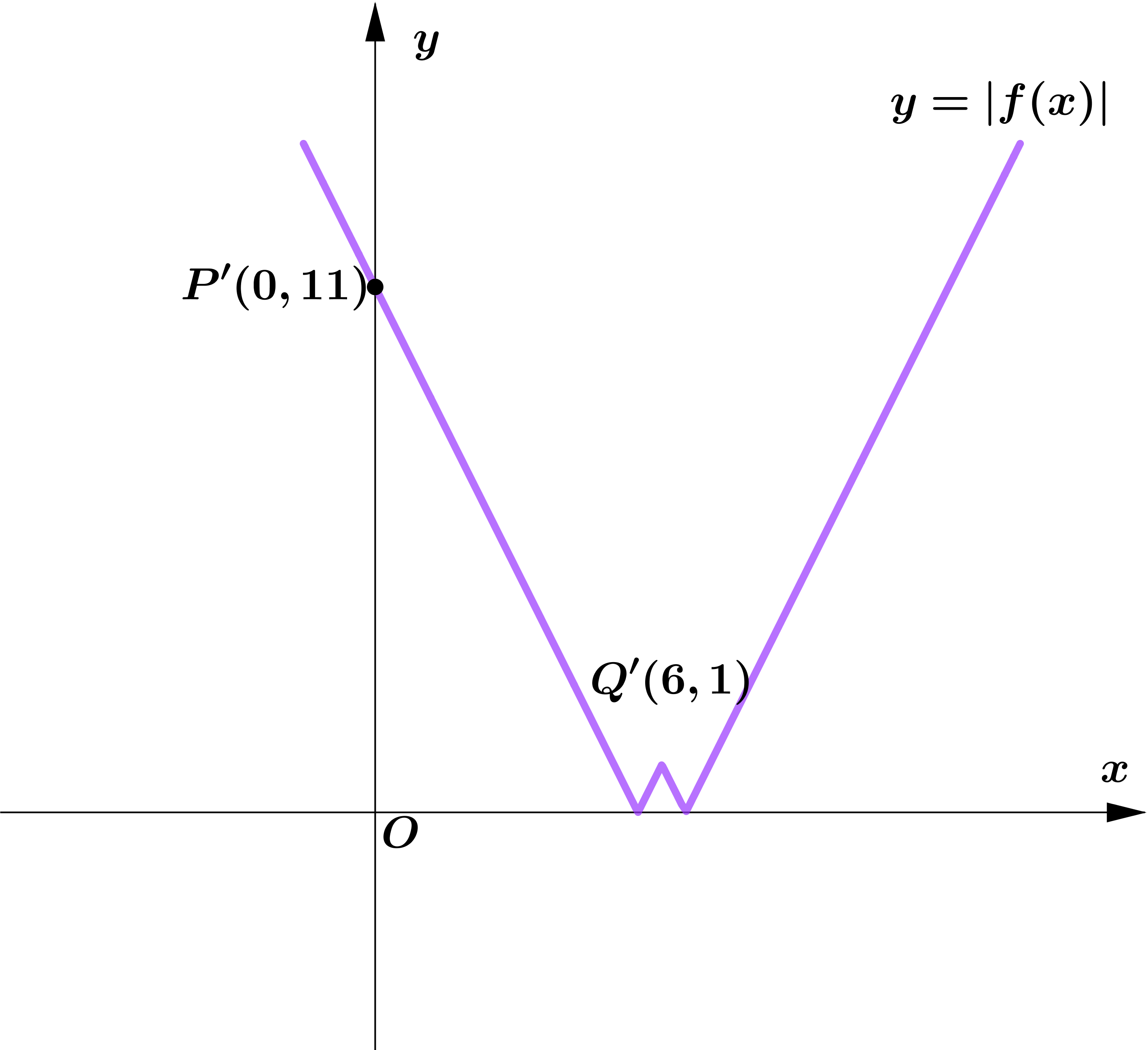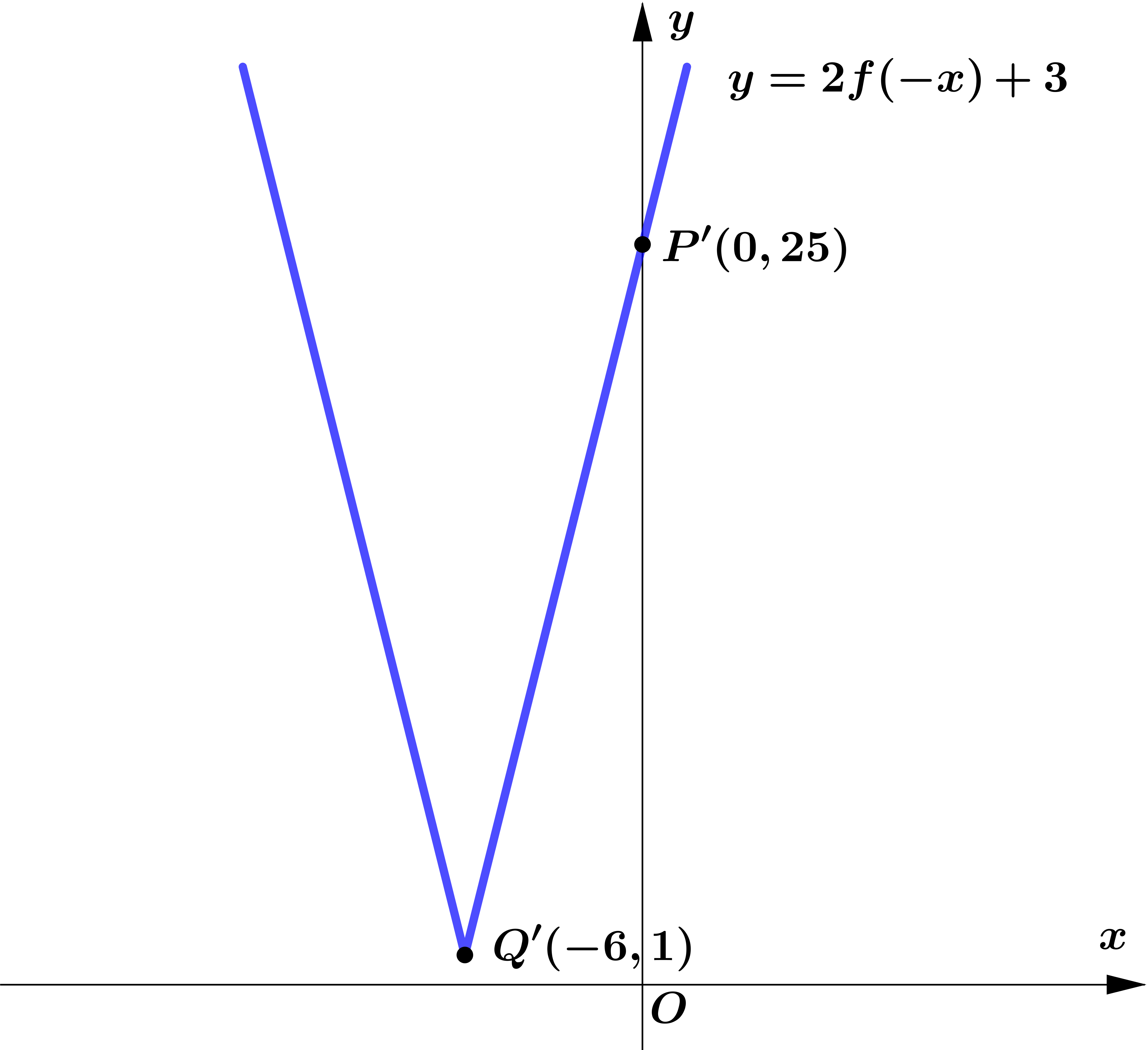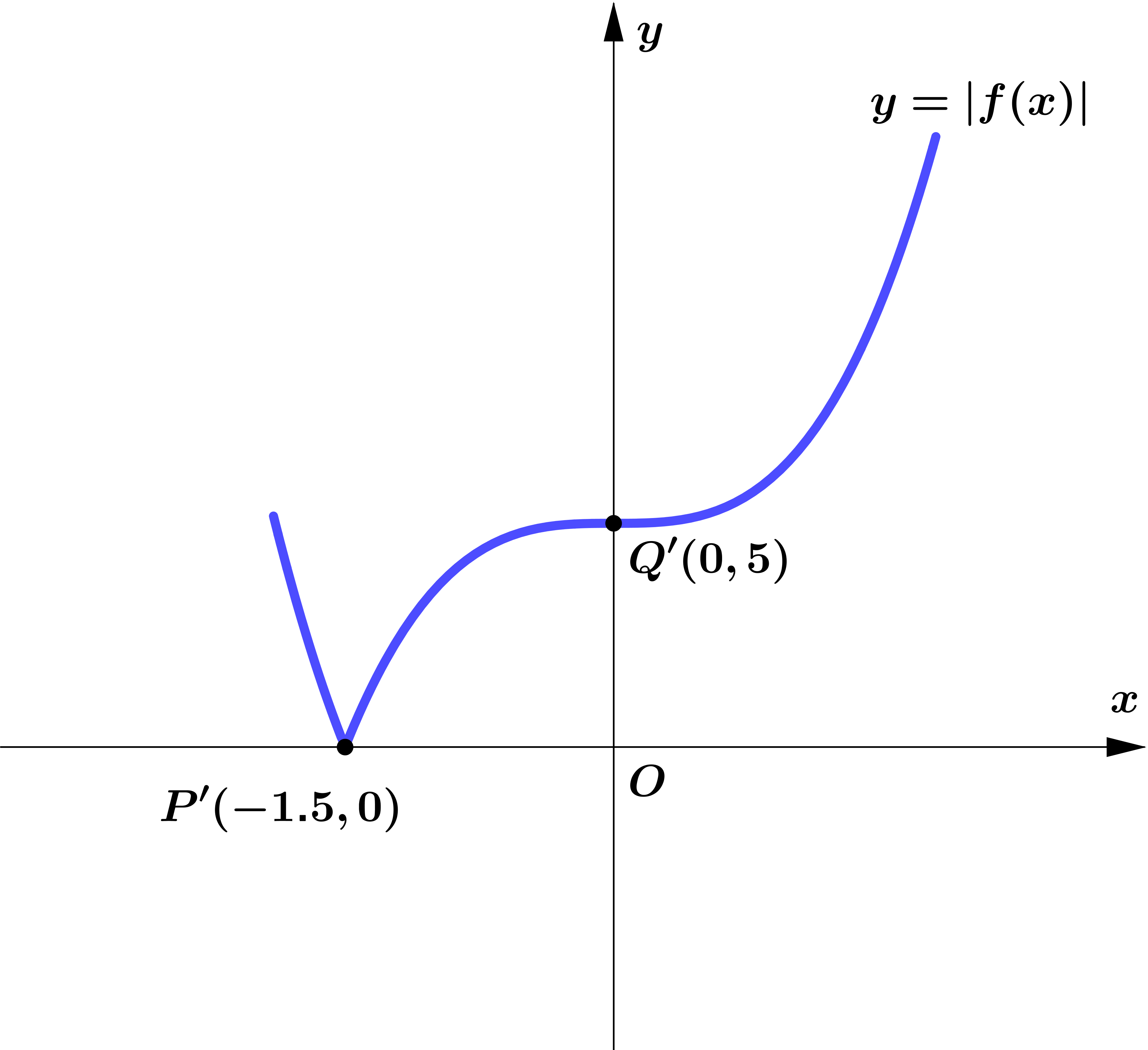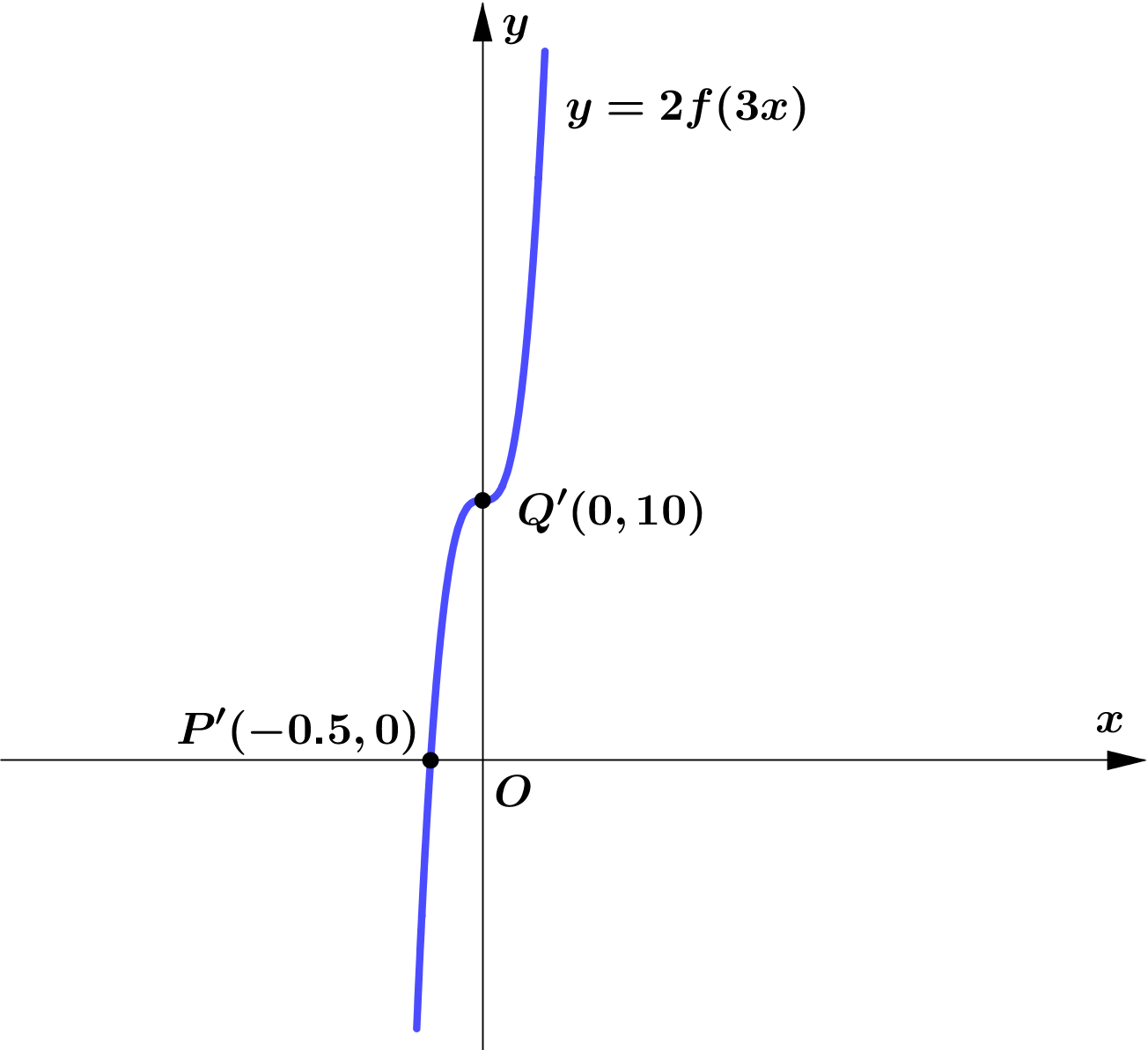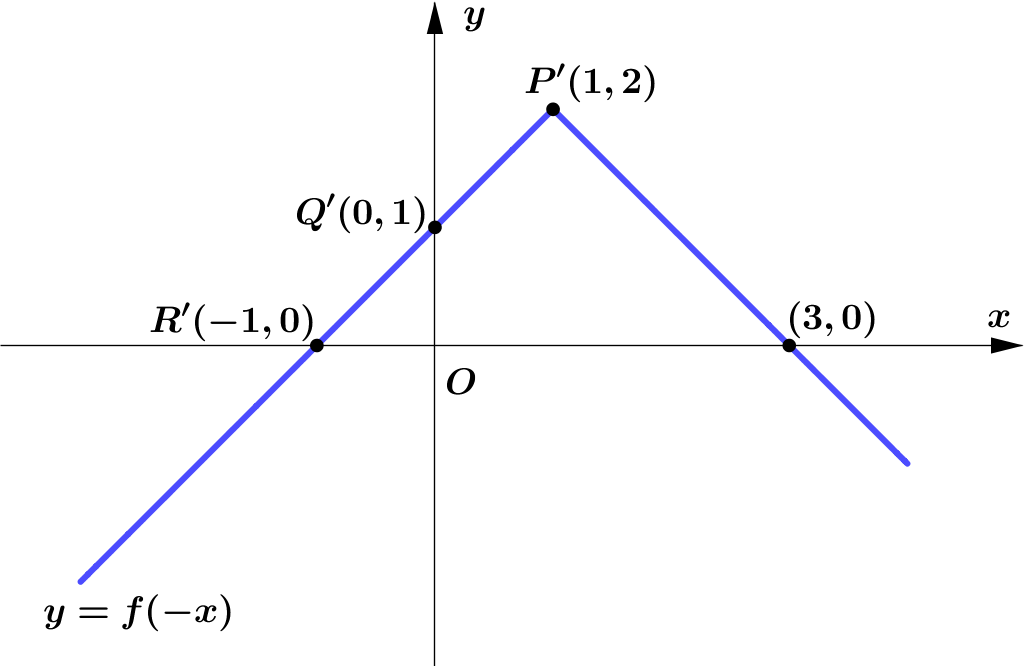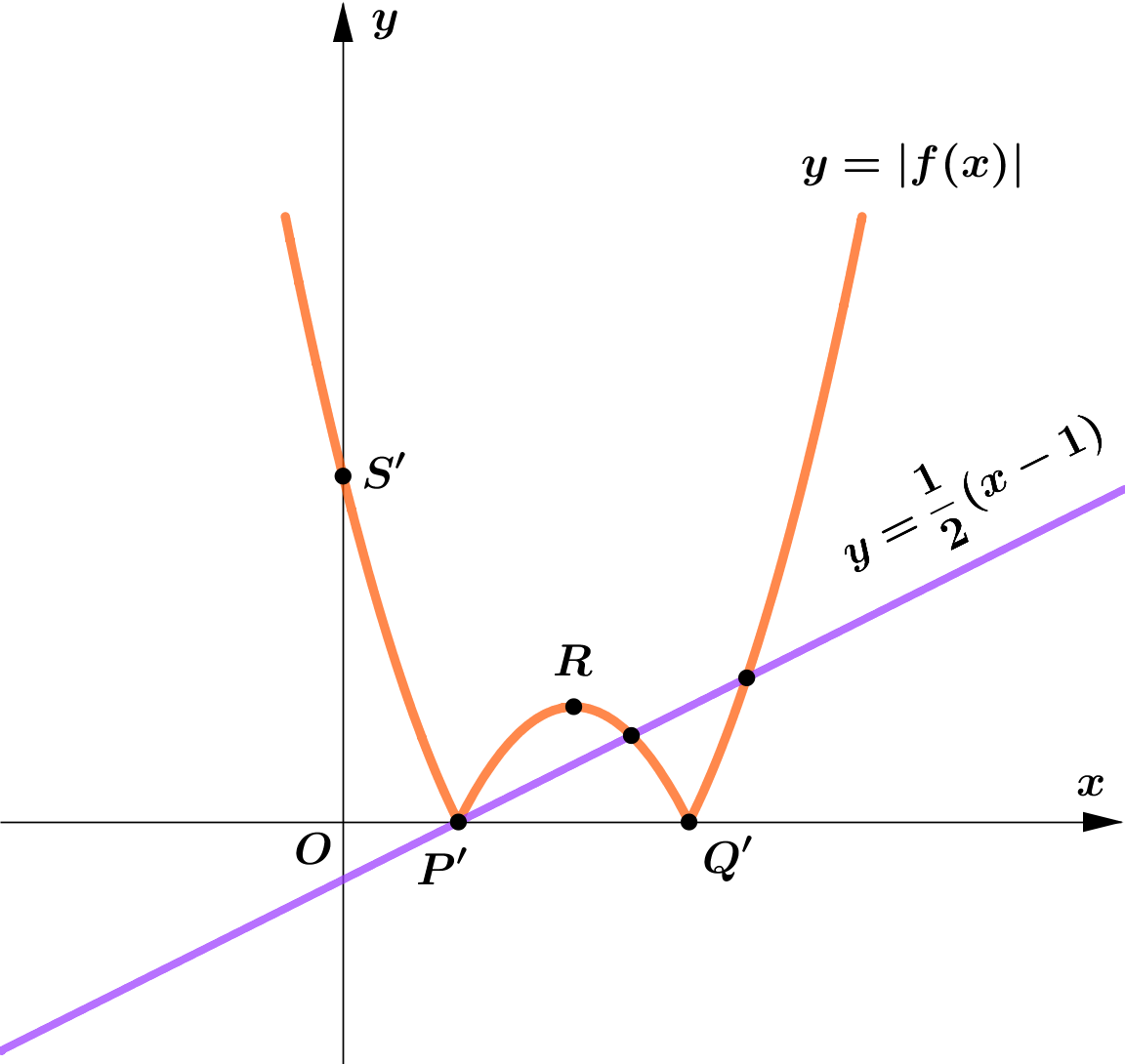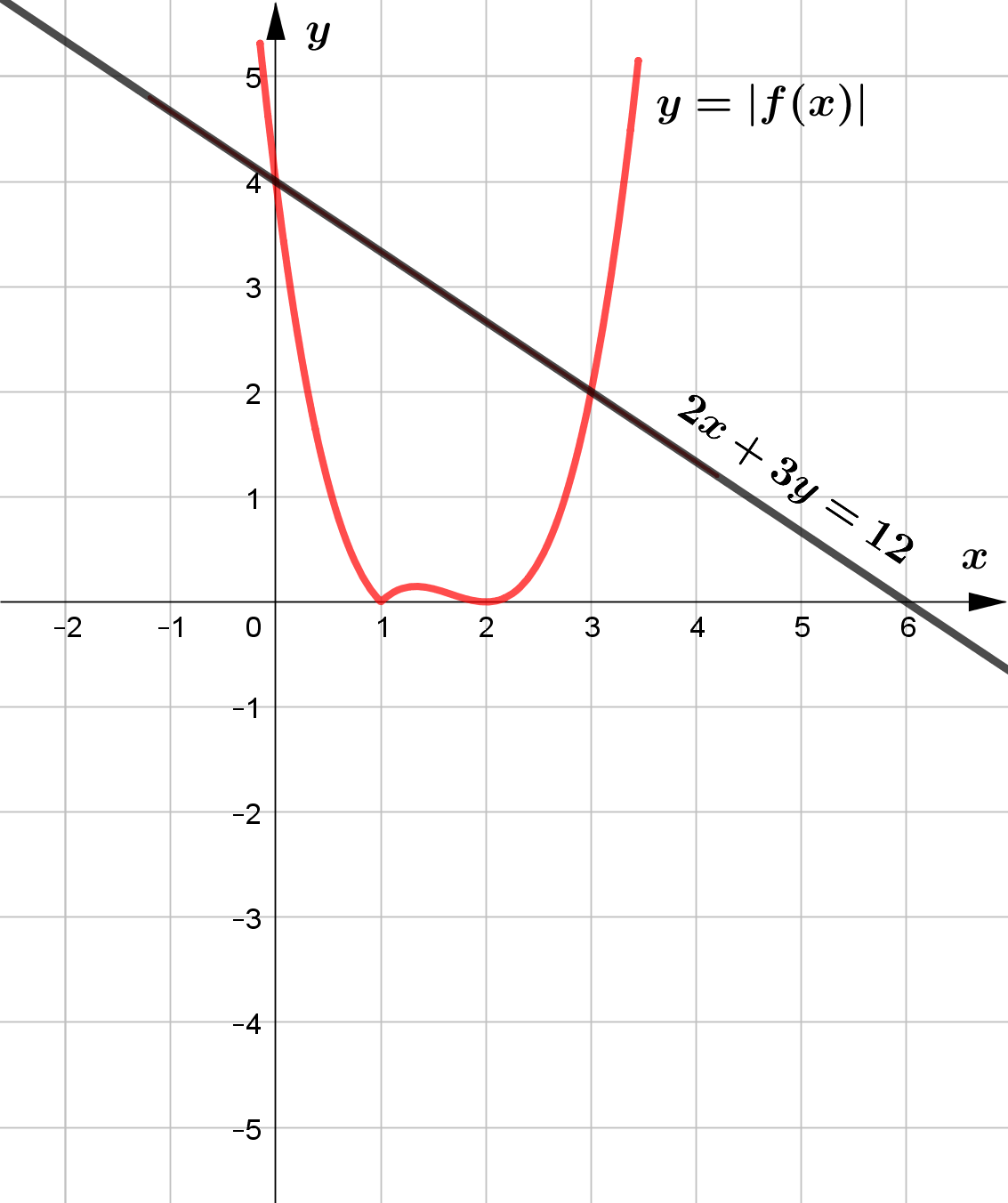Graphs of $y=|f(x)|$
Modulus Function တစ်ခု၏ image (output) များသည် $0$ သို့မဟုတ် $0$ ထက်အမြဲကြီးကြောင်း သိရှိခဲ့ပြီး ဖြစ်သည်။ ထို့ကြောင့် Function တစ်ခု၏ modulus grph ကို sketch လုပ်သည့်အခါ မူလ (parent) Function ၏ $x$-axis အောက်ရှိ graph ၏ အစိပ်အပိုင်းများကို $x$-axis နှင့် ခေါက်ချိုးညီ $x$-axis အပေါ်သို့ ရွှေ့ပေးလိုက်ခြင်း (reflection about $x$-axis) ဖြစ်သည်။
Graph တစ်ခုလုံးကို reflect လုပ်ခြင်းမဟုတ်ပဲ Negative Portion ကိုသာ ရွှေ့ပေးခြင်း ဖြစ်သည်ကို သတိပြုရပါမည်။ အောက်ပါ ဥပမာများကို လေ့လာကြည့်ပါ။
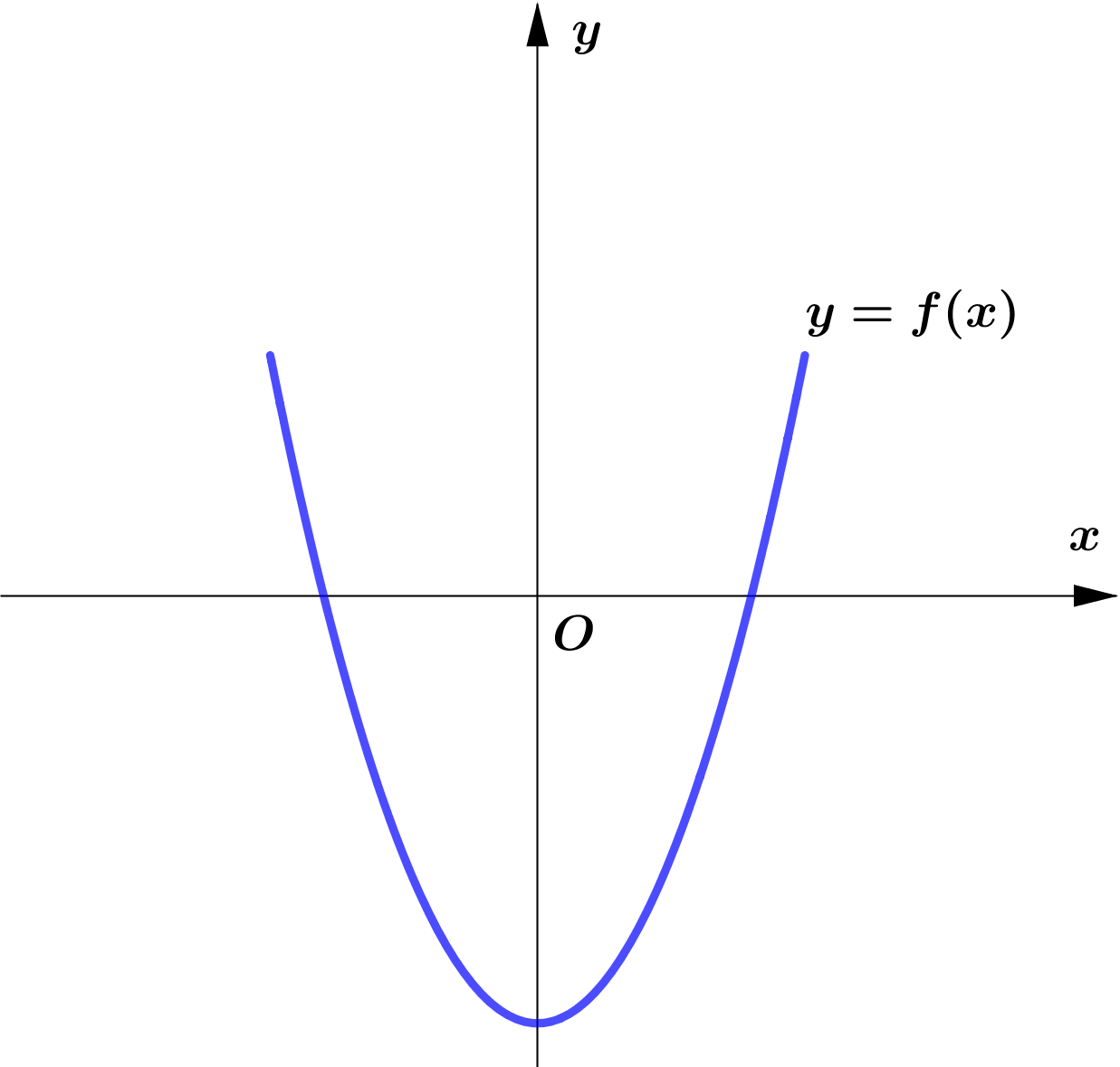 |
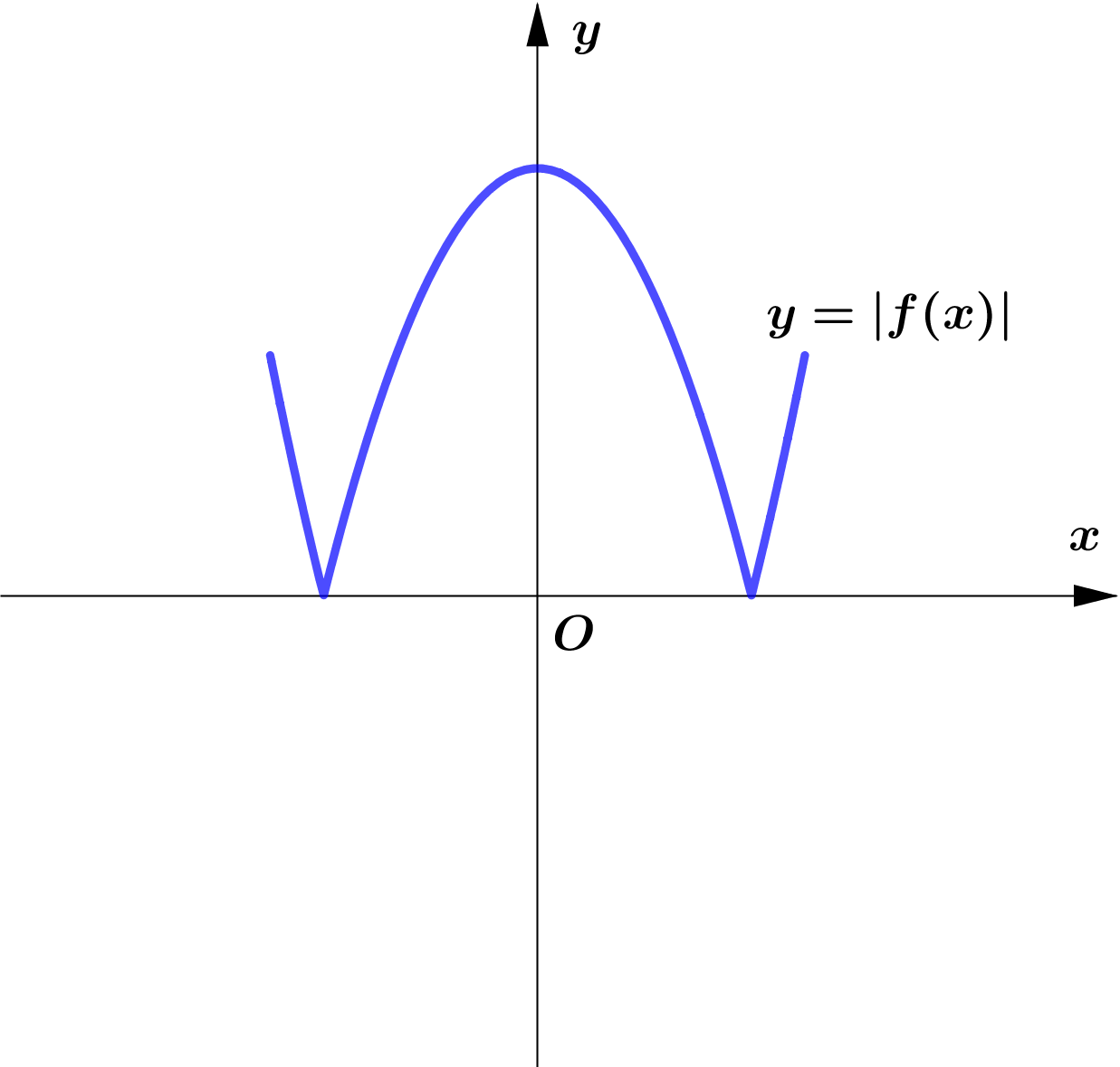 |
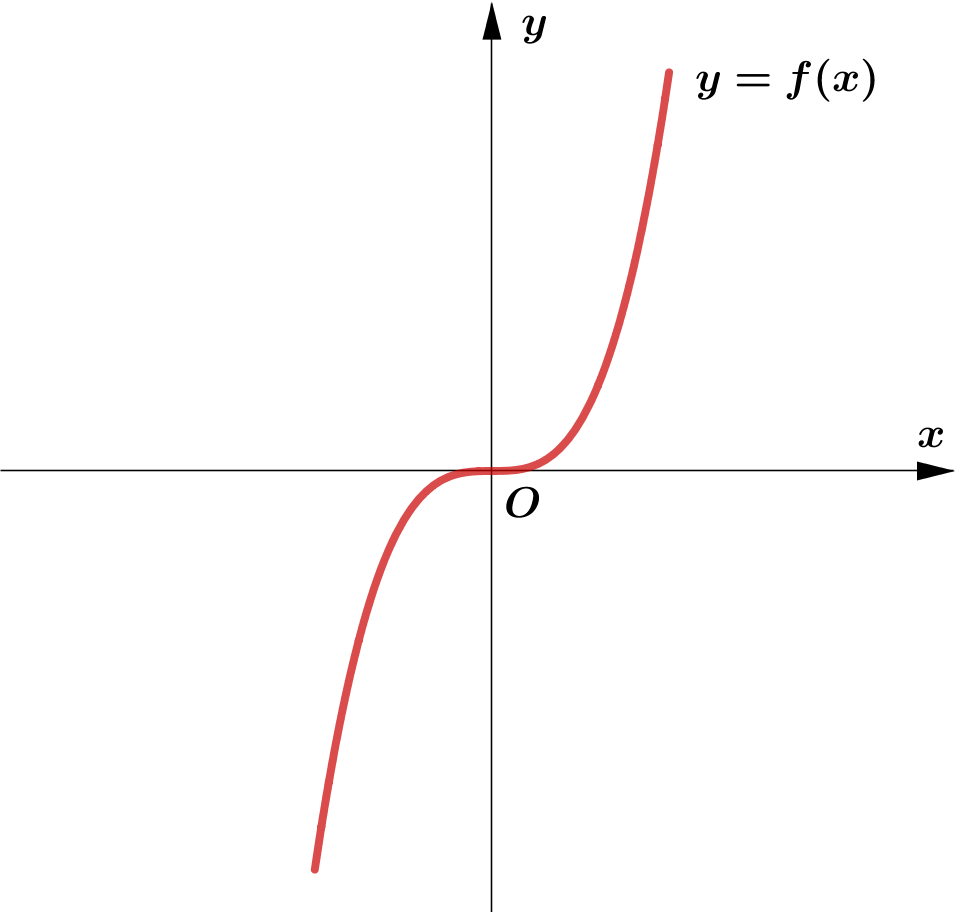 |
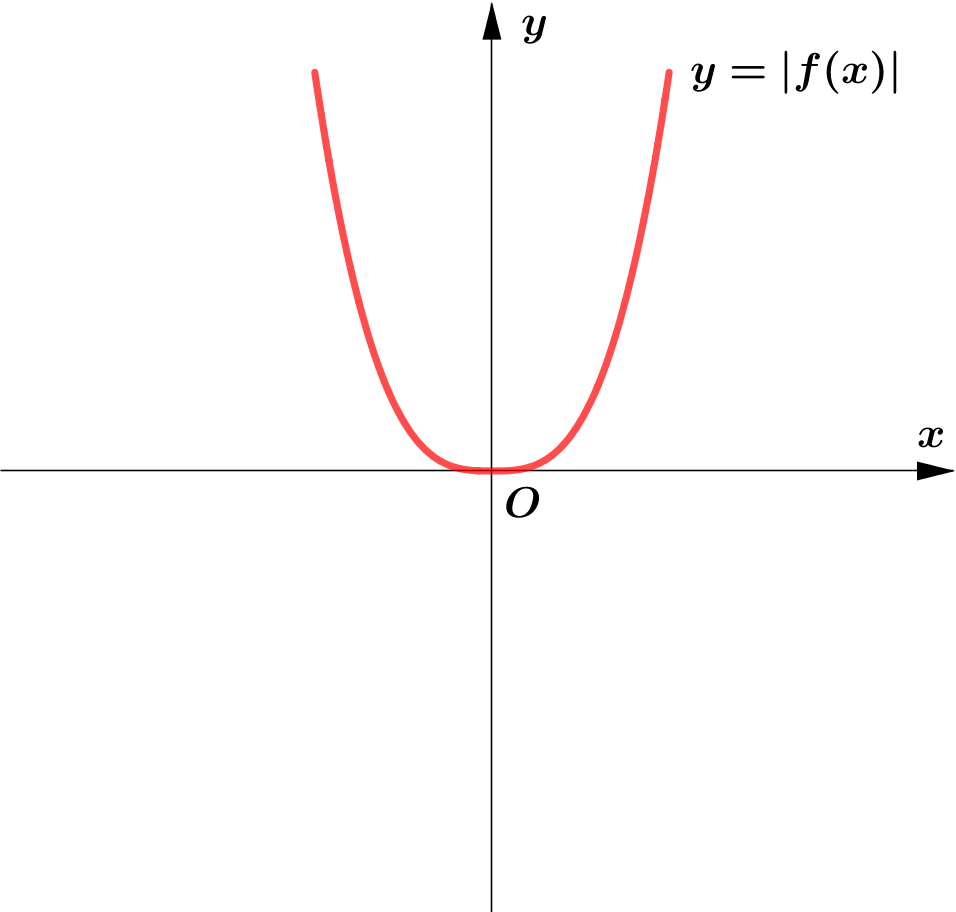 |
 |
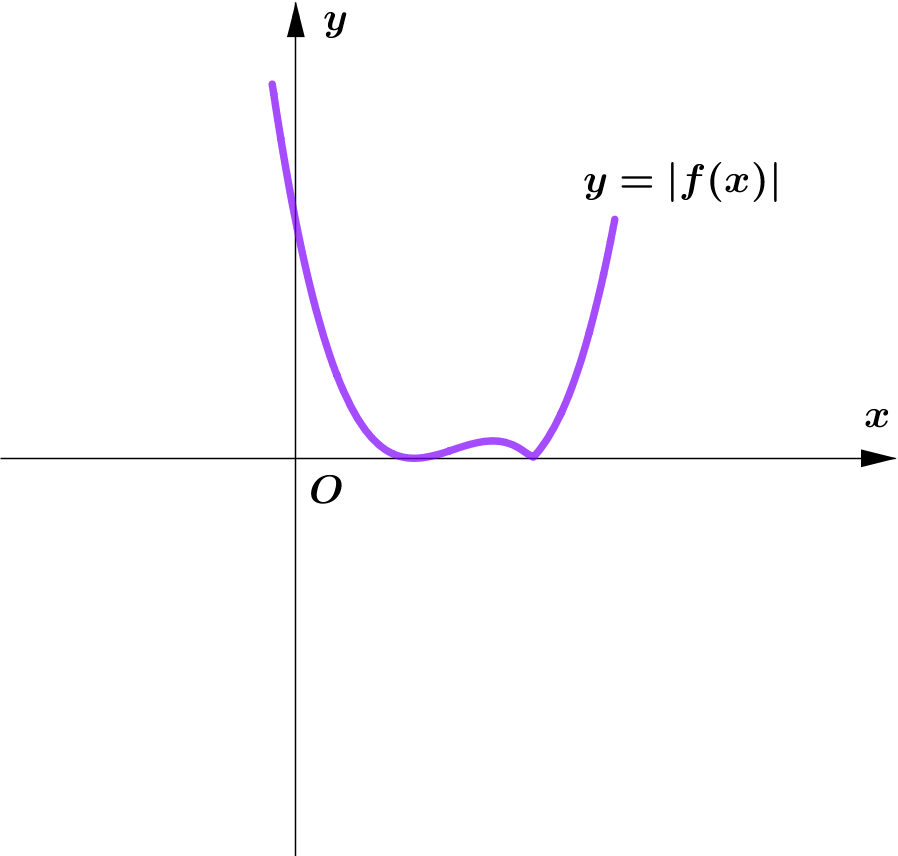 |
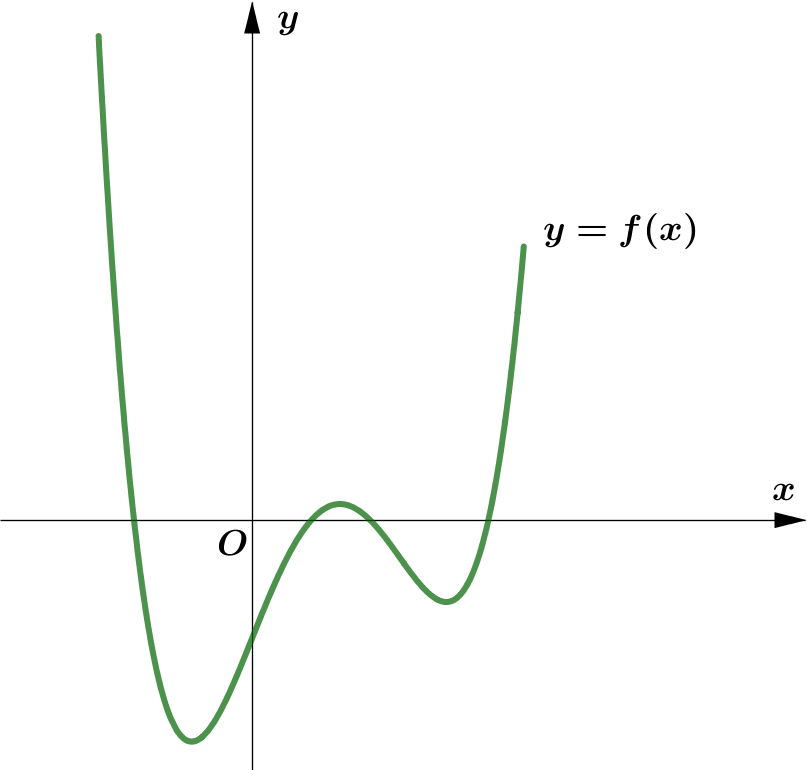 |
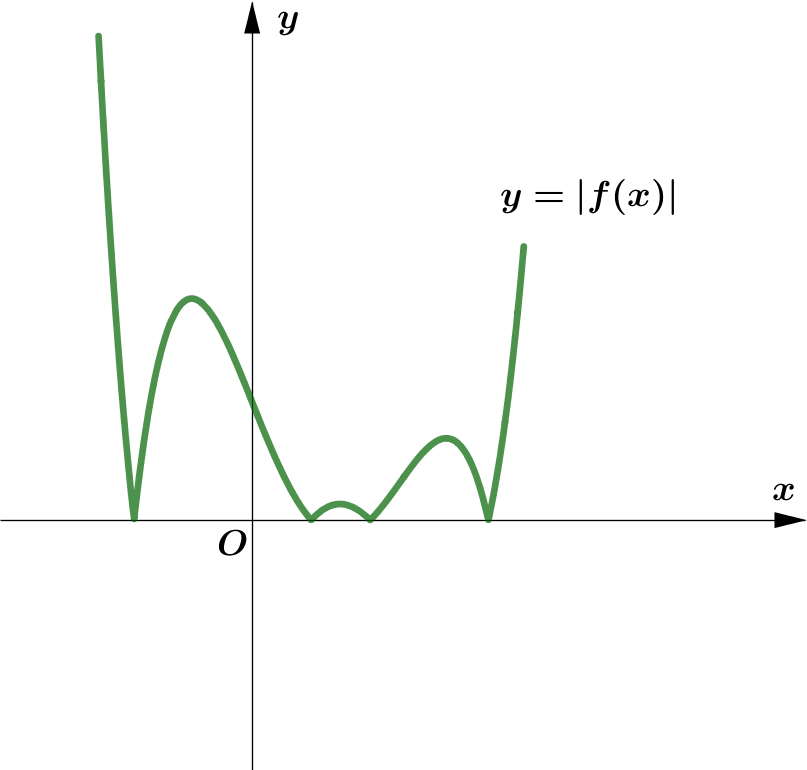 |
Question 1
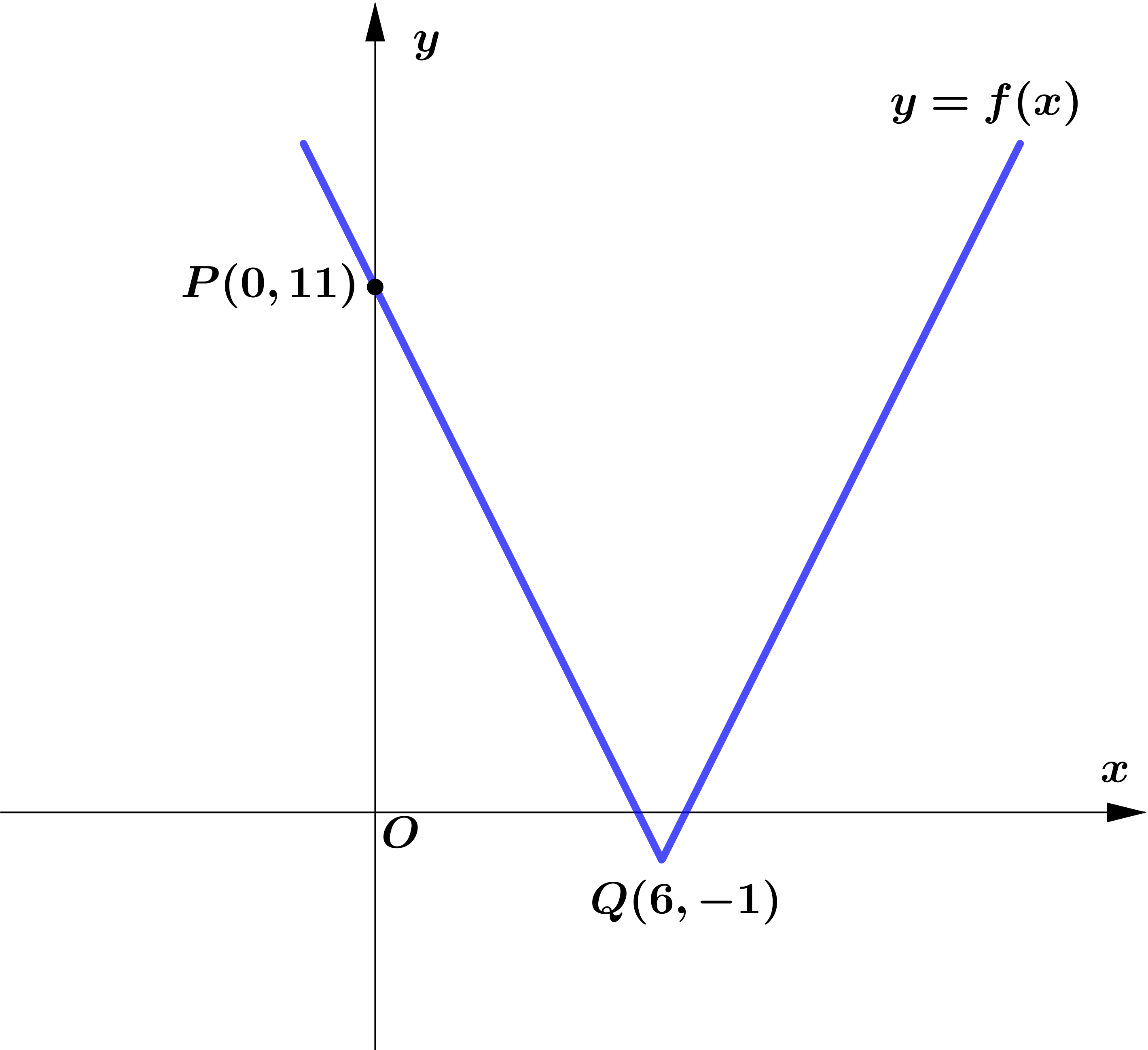
Figure 1 shows part of the graph with equation $y=f(x), x \in \mathbb{R}$.
The graph consists of two line segments that meet at the point $Q(6,-1)$.
The graph crosses the $y$-axis at the point $P(0,11)$.
Sketch, on separate diagrams, the graphs of
(a) $y=|f(x)|$
(b) $y=2 f(-x)+3$
On each diagram, show the coordinates of the points corresponding to $P$ and $Q$.
Given that $f(x)=a|x-b|-1$, where $a$ and $b$ are constants,
(c) state the value of $a$ and the value of $b$.
Question 2
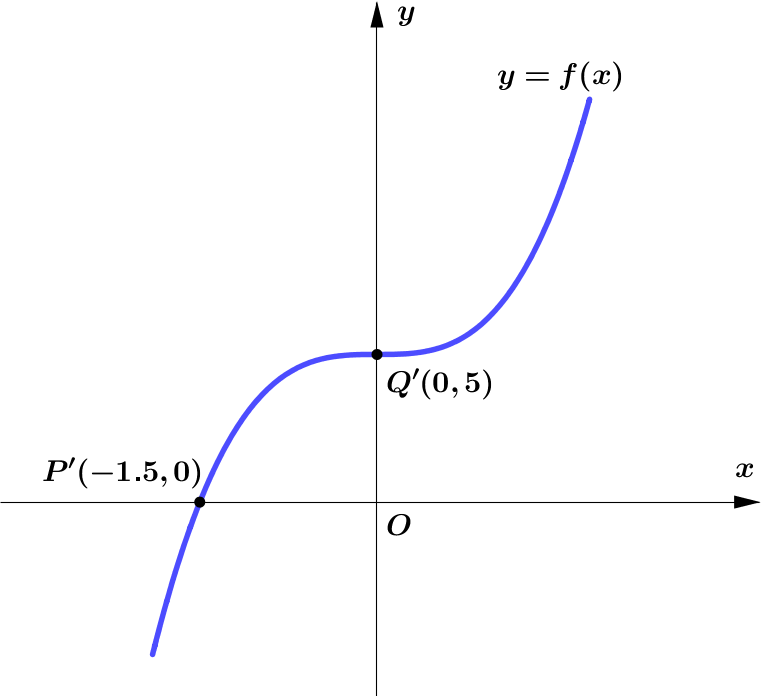
Figure 2 shows part of the curve with equation $y=f(x)$.
The curve passes through the points $P(-1.5,0)$ and $Q(0,5)$ as shown.
On separate diagrams, sketch the curve with equation
(a) $y=|f(x)|$
(b) $y=2f(3 x)$
Indicate clearly on each sketch the coordinates of the points at which
the curve crosses or meets the axes.
Question 3

Given that $f(x)=2-|x+1|, x \in \mathbb{R}$.
Figure 3 shows the graph of $y=f(x)$.
$P$ is the vertex of the graph.The graph cuts the $y$-axis
at the point $Q$ and the $x$-axis at the points $(-3,0)$ and $R$.
(a) Find the coordinates of the points $P, Q$ and $R$.
Sketch, on separate diagrams showing the corresponding vertex, $x$ and
$y$-intercepts, the graphs of
(b) $y=|f(x)|$,
(c) $y=f(-x)$.
(d) Solve $f(x)=\dfrac{1}{2} x$.
Question 4
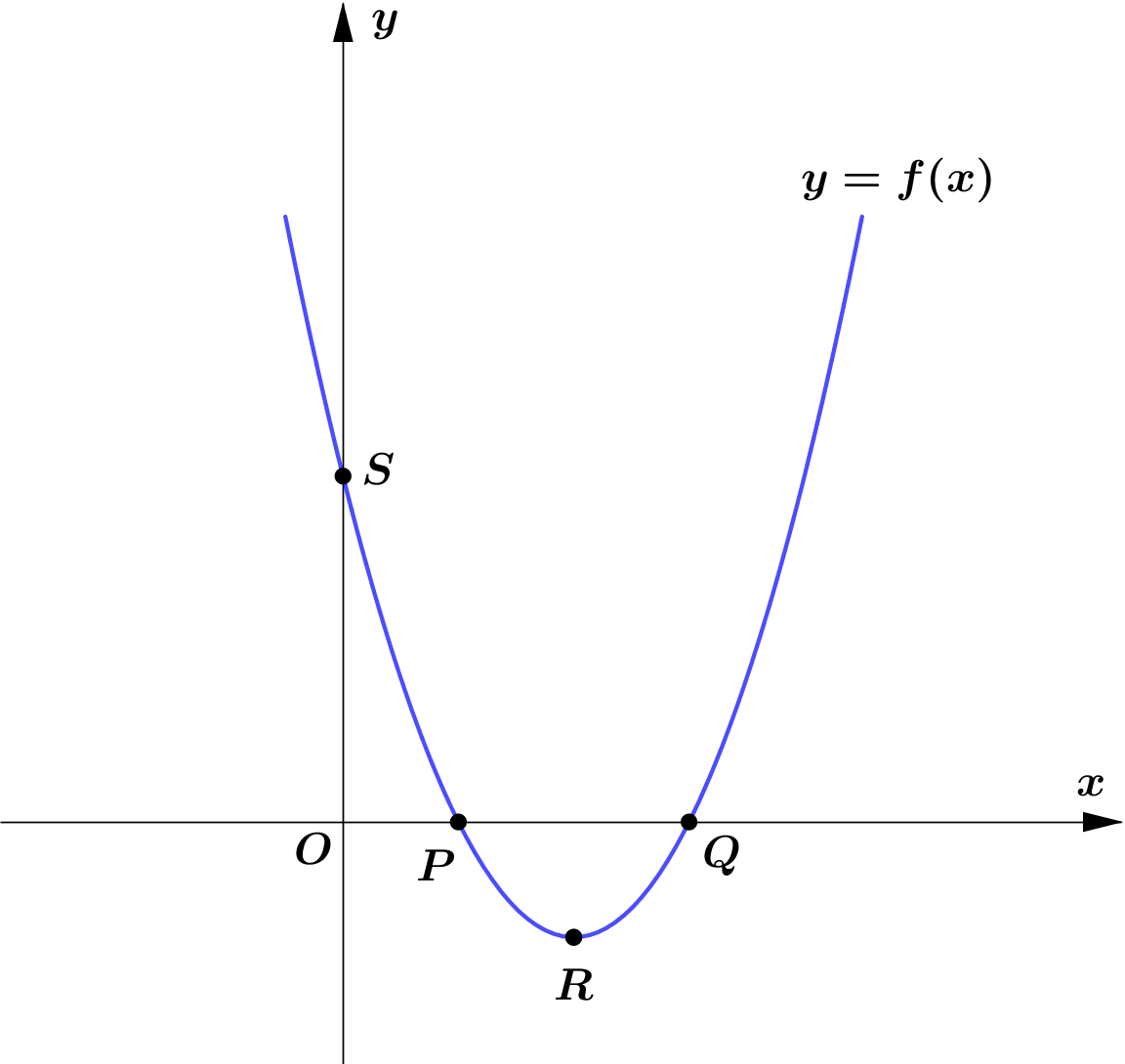
Given that $f(x)=(x-2)^2-1, x \in \mathbb{R}$.
Figure 4 shows the graph of $y=f(x)$.
$R$ is the vertex of the graph.The graph cuts the coordinate axes
at the points $P, Q$ and $S$.
(a) Find the coordinates of the points $P, Q, R$ and $S$.
(b) Sketch, the graph of $y=|f(x)|$ and $y=\dfrac{1}{2}(x-1)$ in the same plane.
(c) Hence or otherwise, find the the number of solutions of $|(x-2)^2-1|=\dfrac{1}{2}(x-1)$.
Question 5
The functions $f$ and $g$ are defined for all real values of $x$ by
$f(x)=3 x-2 \quad \text { and } \quad g(x)=3 x+7$
Find the exact coordinates of the point at which
(a) the graph of $y=(f\circ g)(x)$ meets the $x$-axis,
(b) the graph of $y=g(x)$ meets the graph of $y=g^{-1}(x)$,
(c) the graph of $y=|f(x)|$ meets the graph of $y=|g(x)|$.
Question 6
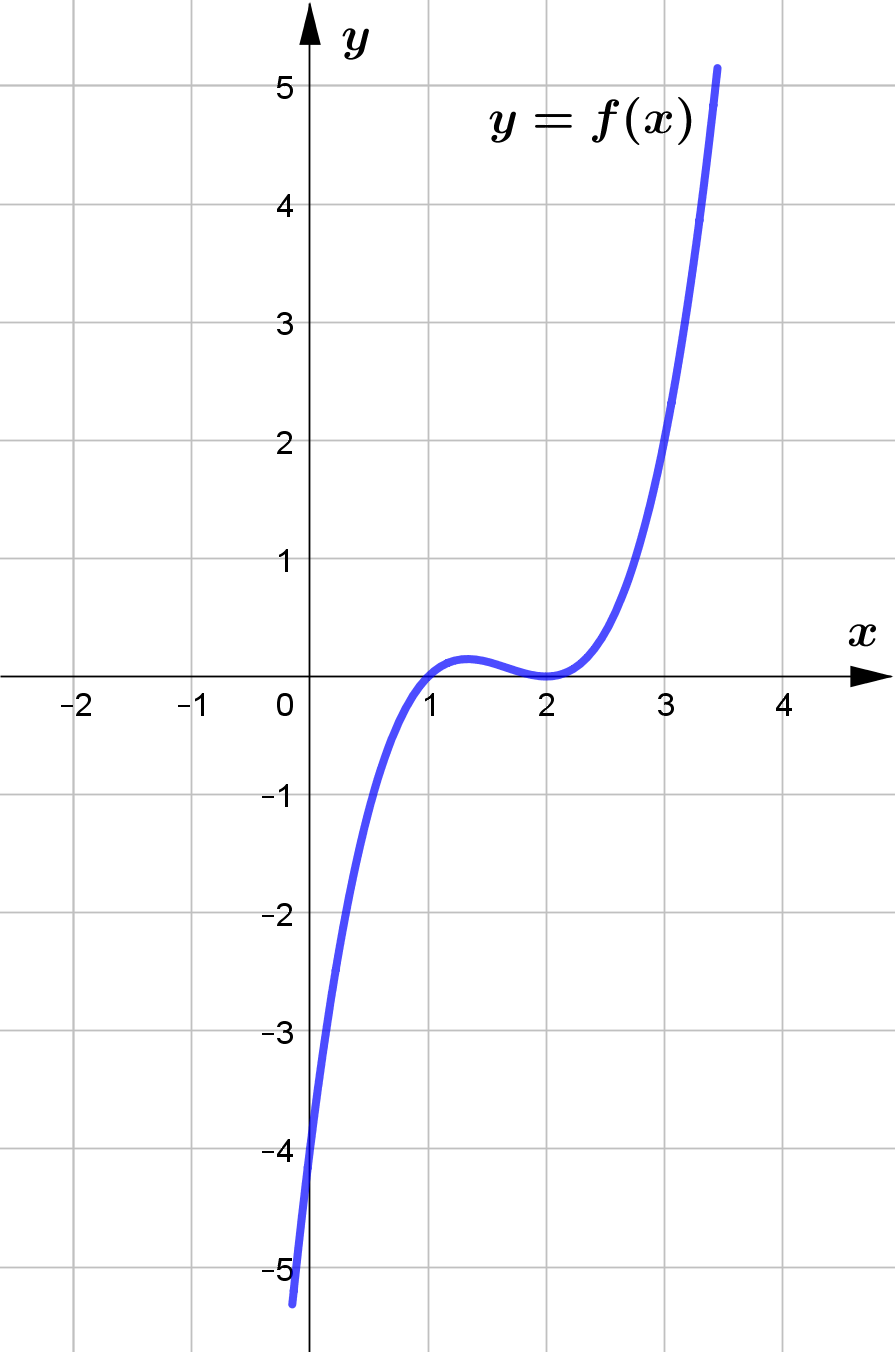
Given that $f(x)=(x-2)^2(x-1), x \in \mathbb{R}$.
Figure 5 shows part of the graph of $y=f(x)$.
(a) Sketch, the graph of $y=|f(x)|$ and $2x+3y=12$ in the same plane showing
the points of intersection of the two graphs.
(b) Hence or otherwise, find the solution set of the inequality
$|(x-2)^2(x-1)|\le 4-\dfrac{2}{3}x$.


